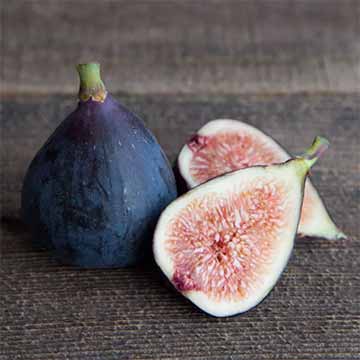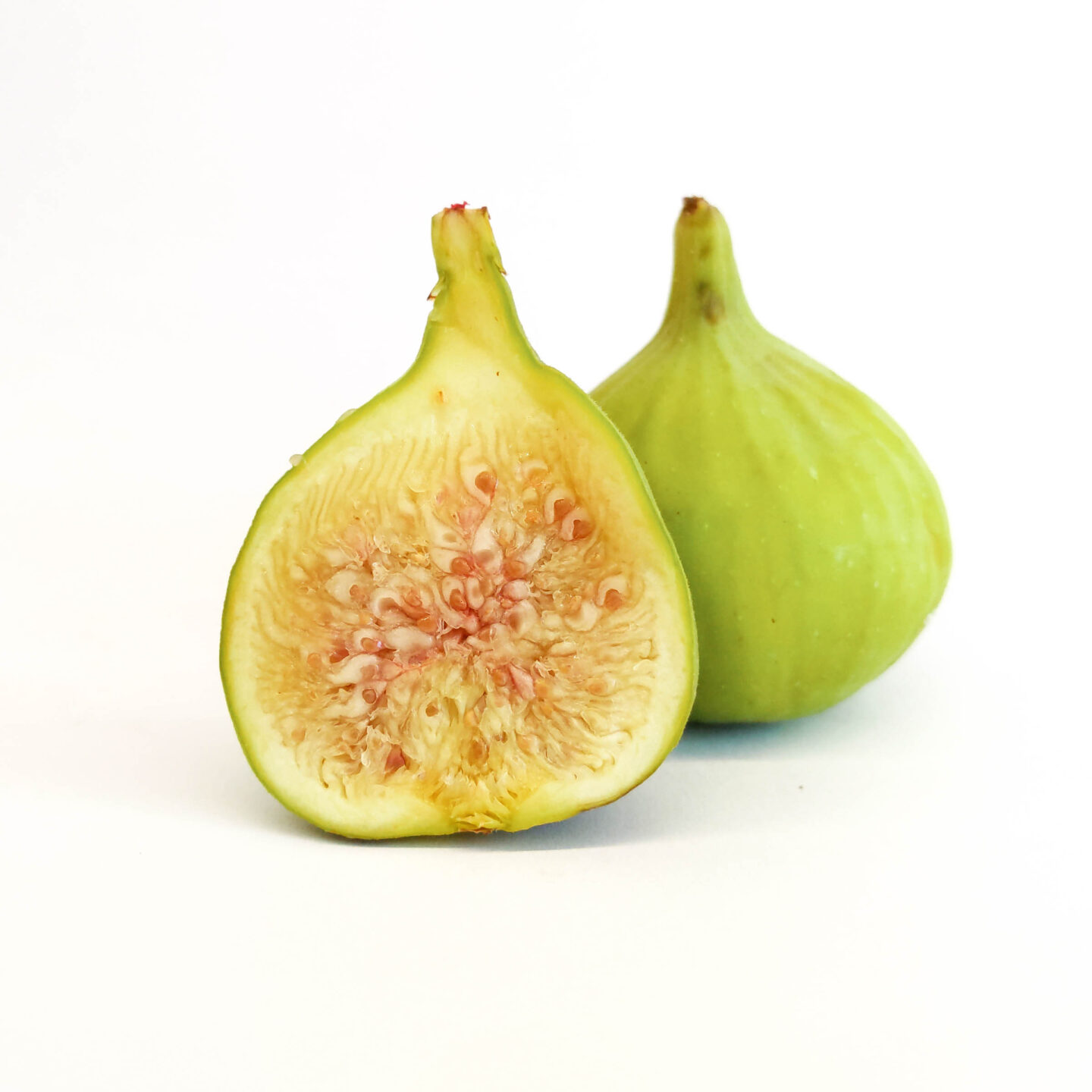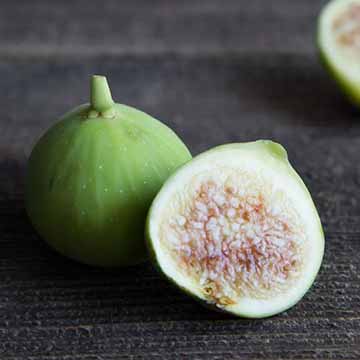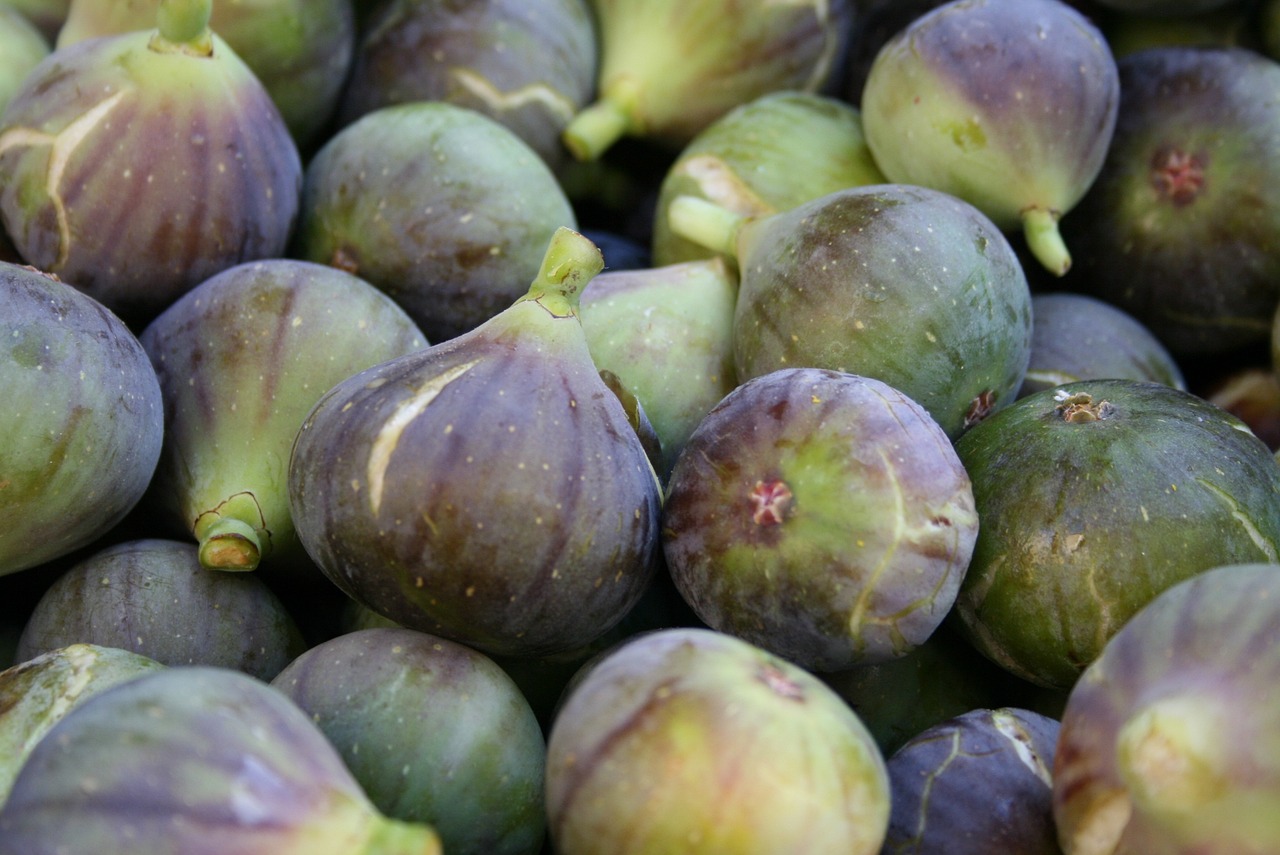Figs are a fruit where both the flesh and skin are edible. They do best where it is warm in the summer and not too cold in the winter, though the Chicago Hardy variety can be grown as low as zone 5.
If you can find figs grown nearby at your farmers market, they will taste the best (because fully ripe figs don’t store or ship well). [feast_advanced_jump_to].
With their subtly sweet flavor and luscious texture, fresh figs are a real treat during summer and fall. But the fig season is quite short lasting just a few months. When can you expect these delicious fruits to ripen?
Here is a complete guide to when figs come into season based on variety and location
An Overview of Fig Seasonality
Figs have an unusually short harvest window compared to other fruits. The season only lasts 2-4 months, depending on climate and variety.
In warm regions like California and the Mediterranean, the main fig season runs from June through September. Cooler zones see figs ripen slightly later, from August to October.
Additionally, some fig varieties produce two crops per year. The small early crop is called the breba crop. The main late-summer/fall crop is known as the main crop.
Fig Harvesting Season by Location
Location plays a major role in fig seasonality. Here’s a breakdown of when figs are harvested across different regions:
California
- Breba crop: early June
- Main crop: August to November
California produces nearly all the figs for the US market. Warm conditions allow an exceptionally long season from early summer through fall. Popular varieties like Black Mission, Brown Turkey, and Sierra ripen over 4-5 months.
Southern States
- Breba crop: May to June
- Main crop: August to October
States like Texas, Louisiana, and Florida also enjoy long fig seasons thanks to hot summers. Harvesting typically runs May through October.
Mid-Atlantic and Northeast
- Main crop only: mid-August to October
Colder zones only get a single late summer/fall fig crop. Expect figs to be in season from mid-August through the first frost, usually October.
Pacific Northwest
- Main crop: September to October
The cool Pacific Northwest sees figs ripen in early fall. Most varieties produce their main crop between September and the first frost in October.
Fig Harvest Times by Variety
The fig variety also determines ripeness windows. Here are harvest seasons for popular types:
- Black Mission: early June through November (two crops)
- Brown Turkey: May through November (two crops)
- Green Kadota: one crop from August to October
- Black Jack: August and September
- Celeste: July and August
- Brown Turkey: July through September
- Sierra: August to November
Black Mission and Brown Turkey are the most widely grown. Their long seasons and two annual crops give lots of harvest time.
Green and yellow varieties like Kadota and Tiger ripen later, with just a single main crop.
To enjoy the longest fig season, grow early, mid, and late-season varieties. For example, combine Black Mission, Celeste, and Brown Turkey.
Tips for Harvesting Figs
Fig fruits don’t all ripen at once. Here are some tips for collecting fruits at optimal ripeness:
-
Check trees every 2-3 days once figs start coloring.
-
Gently squeeze fruits. Ripe figs feel soft and pliable.
-
Harvest figs when they droop slightly and hang down.
-
Use pruners to clip ripe figs from the branch. Don’t pull and tear.
-
Handle carefully to avoid bruising delicate fruit.
-
Eat fresh figs within 2 days for best quality and flavor.
Follow these guidelines to enjoy the sweetest, most luscious figs. Just be ready to move fast once they start ripening!
Storing and Preserving the Fig Harvest
Since fresh figs are highly perishable, many gardeners preserve the bountiful harvest. Here are some ideas:
-
Freeze whole figs for later use in baking and jams.
-
Dry figs in a dehydrator or oven to enjoy as snacks.
-
Can figs in syrup or make sweet preserves like fig jam.
-
Ferment figs to make wine, vinegar, or other drinks.
Proper storage and preserving allows you to enjoy figs long after the short season ends.
Savoring Summer’s Sweet Fig Harvest
The fleeting fig season gives us just a few months to enjoy these honey-sweet jewels. By knowing when fig varieties ripen in your growing zone, you can fully savor the harvest.
Be ready to preserve the bounty by freezing, drying, canning, or fermenting. And most importantly, indulge in fresh figs while they last – their luscious flavor is the perfect taste of late summer.
Why don’t we see imported figs?
Often when we want a fruit year-round, we import them from other countries. Chile produces a large fig crop but were first allowed to be imported to the US in 2011. Many countries allow it, but the figs need to be sprayed directly with methyl bromide to get rid of any bugs that could then spread to US farms.
California grows 98% of the fresh figs in the US and they specialize in 5 varieties: Mission, Brown Turkey, Kadota, Sierra, and Tiger. However, Ive seen a couple others at markets and in stores so Ive listed those as well.
Depending on the type of fig, theres a wide range of flavors it might have – some subtle, others assertive, including berry, honey, caramel, molasses, and plain sugar.

These are the sweetest variety and widely grown throughout California with a molasses-caramel and assertive figgy flavor. Also the most commonly dried fig. Put it in a dish with cocoa and savory spices to make it taste like meat, or wrap it in prosciutto and roast it.

They have a milder flavor than mission figs and are less sweet, which makes them great for salads because they don’t overpower the other flavors. If they don’t taste good, dredge them in honey, grill them, or bake them with extra sugar for a dessert.
Some stores sell both of these figs with a generic “black fig” label (like Trader Joes). The varieties likely vary based on their sources and the seasonality.

These have a nutty flavor that is more detectable than it is in other fig varieties. Its also the sweetest green variety, with a honey and butterscotch flavors coming through. Great for salads, on a cheese board, or stuffed with whipped goat cheese & nuts.

Tiger (candy stripe or panache)
The flavor of tiger figs skews more citrus and raspberry-jam than the nutty-honey flavors of other varieties. Recently gaining in popularity, they might still be hard to find as they are harder to grow.

A less-sweet fig without the flavor of honey and a smoother flesh than other varieties. They’re not the best for a sweet snack, but they taste great in salads with other stronger flavors, drenched in honey, or made into jam.

A recent variety (introduced in 2005) with a light, sweet flavor. (I havent personally tried these so unfortunately, I am unable to elaborate on the flavor).
Some of the varietal s posted with permission from California Figs
Generic labeled “Green” figs might be offered at your grocery store. The actual specific varieties might vary depending on whats available throughout the season.
This Is Your LAST CHANCE: Do This NOW To Your Figs For BIG Harvests!
FAQ
What is the best time of year to buy figs?
What month are figs ready to harvest?
What months are best for figs?
What time of year are figs in season?
When are figs in season?
The season for figs depends on their variety and location. Generally, black mission figs are the first to appear in the market and are shortly followed by the brown turkey variety. Furthermore, most green figs are available from June or July. Calimyrna figs have the shortest season of all fig varieties, lasting only three months.
When do figs mature?
The early season varieties are the first to grace our gardens and fruit bowls. These figs typically mature during the late spring to early summer months. Their arrival is often eagerly anticipated, as they mark the beginning of the fig season.
When do fig trees grow?
Typically, figs feature two main cropping seasons annually. The first, known as the “breba” crop, appears in late spring to early summer, while the second, or “main” crop, matures from late summer to early fall. However, the timing of these seasons can vary based on the region and the specific variety of the fig tree.
When do fig trees ripen?
Some varieties (like Black Mission) actually have two seasons: the early summer season produces fruit on old tree branches, and the late-summer/fall season produces fruit on new branches. Black Mission figs are usually the first to show up, quickly followed by Brown Turkey. Most green figs are in season starting in June or July.
- The Ultimate Guide to Growing Strawberries in Raised Beds - August 8, 2025
- No-Dig Garden Beds: The Easiest Way to Grow a Beautiful Garden - August 6, 2025
- How to Protect and Preserve Wood for Raised Garden Beds - August 6, 2025

